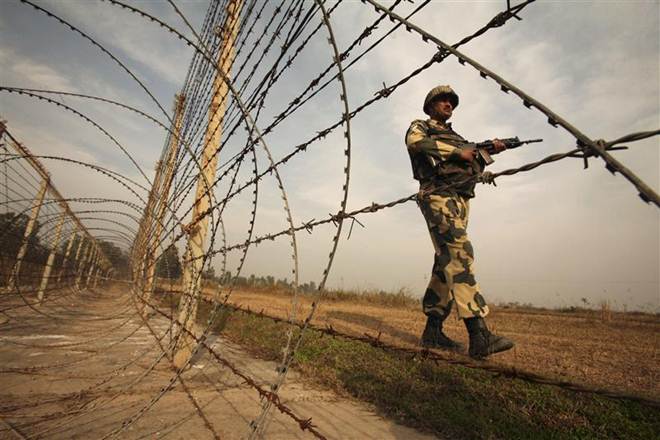FIFA U-17 World Cup:It wasn’t a water to wine story, after all. Even though they chased a win all along, India’s primary goal was to ensure they are not humiliated. In that they have succeded. The courageous attitude of the Indian players was contagious. They wore their hearts on the sleeves and, against established footballing nations, they played with a mindset that few Indian football teams have.
But that was the only positive to come out of it. The under-17 World Cup has been a reality check for India, in terms of the quality of players and the overall structure of the game in the country.
Pressing the reboot button
What this tournament has proven is the need to press the reboot button. Quite frankly, India cannot hope to qualify for a senior World Cup with this bunch of players. Or the next. The players are easily the best India have had in this age-group for a long time. But India’s best are still light years behind the world. It shows in their poor ball control abilities and reading of the game.
India put a lot of bodies behind the ball, which made defending a bit easier. But going forward, the team lacked imagination. Their passes — when they passed the ball, that is — were obvious, anticipation wasn’t great and because of a poor first touch, were wasteful in possession.
The teams that are good at these things have players taking their first lessons at the age of 5. In India, they start after 10. When you start five years after rest of the world, you are always playing catch-up. Worryingly for India, there is still no structure at the 5 to 10 years level. The AIFF has been planning a ‘baby league’ for close to a year. But they are nowhere close to implementing it. A Centre of Excellence, too, is planned. But only on paper.
Not just the AIFF, grassroot programmes of some clubs — I-League or ISL — are as laughable as the suggestions that India will qualify for 2022 World Cup. There is an urgent need to relook at the entire structure to ensure children are coached at an early age. The results may take 15-20 years to show (China hosted the under-17 World Cup in 1985 and it is still trying to get a perfect youth structure). But that is the only way forward.
Widening gap
The general belief is that keeping this bunch together and nurturing them will bode well for the national team. Whether it is a sustainable model is debatable, especially since AIFF has tried it once before with the Arrows — a project that promised so much but had to be aborted due to lack of finances.
The current team will be kept together for the next two years to ensure they progress well. But while they improve, so will the rest.
A former India captain recently gave an example of his youth days. In an under-16 tournament in late 90s, an India team that he was a part of lost to Japan by ‘just’ two goals. It gave them the confidence, he said, that they are not too far behind the world’s best.
In 2004, he had graduated to the senior team and India met Japan in the World Cup qualifiers. Both teams had several players from that under-16 match so India expected a close match.
However, they lost 7-0.
India are generally competitive at the Asian level till the under-16 or 19 level. But lack of competitions and poor quality of the domestic league hampers their growth. So by the time they reach the senior team, their level goes down at times instead of improving. India’s under-17 coach Luis Norton de Matos said the quality of under-17 World Cup is better than the I-League. He did not spare ISL, either, saying their franchises go to Europe and lose to fourth division clubs there. It was a damning indictment of the domestic game. And he isn’t entirely wrong.
Unless the domestic league strengthens, the national team won’t.
Lack of scouting
That brings us to the role of the clubs. It is astonishing that, apart from Minerva, no other I-League or ISL club contributed to India’s under-17 squad. IMG-Reliance run glossy youth development programmes but that has not yielded anything solid. Most I-League clubs haven’t even attempted to have a grassroots programme.
The club structure in most countries includes a first team, a reserve team, age group teams (U-20, U-19, U-18, U-17, U-16 and U-15) apart from having their own academies. In India, it stops with a senior team and an under-19 side, at best.
The lack of youth teams and scouting process was apparent in the ad-hoc manner in which this team was formed. Having eight players from Manipur (and 10 overall from North East) is a testimony to the region’s dominance. But it is unbelievable that there is not one good player in Goa or Tamil Nadu, Hyderabad or Kashmir.
The infrastructure excuse
They say poor infrastructure in these states has hindered progress. For all these years, India has blamed its shoddy quality of football on the pitiful infrastructure. Lack of proper grounds, of course, is lamentable but that can’t be the reason for a team to not do well. Take Ghana, for instance. “In terms of infrastructure, India is way ahead than Ghana,” the team’s coach Samuel Fabin said.
Most of the players from the squad that steamrolled India grew up playing on dusty, uneven surfaces. They aren’t an exception. Mali, last edition’s runners-up, too do not have sufficient grounds even at a senior level. Even back home, there aren’t as many grounds in the North East as compared to other areas. Yet, the region has contributed most players to this squad.
With the hosting of this event, India’s infrastructure woes have been addressed to some extent and the AIFF wants to use to host bigger, better world level events. Before that, however, it needs to address the issues highlighted during under-17 World Cup to ensure India does not merely play the good host but also be competitive.





Be the first to comment on "FIFA U-17 World Cup: For team India, party over, time to do dishes"